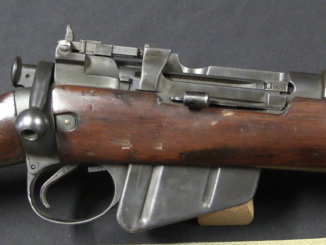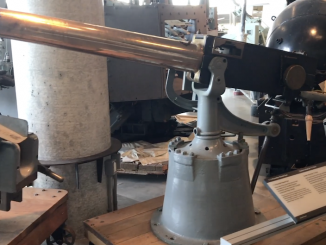When the clouds of World War Two began to loom in the 1930s, Britain decided to begin securing some of its more distant colonial outposts – places that might be of strategic importance in a future conflict. Fiji was once of these outposts – a vital point on the seagoing supply line from Europe and the Americas to Australia and Asia. Construction of coastal defense batteries began in the late 1930s, mostly using 6 inch MkVII naval guns. These batteries were constructed around the capital of Suva and the airfield at Nadi on the west side of the island.
Today we are at the Momi Bay Battery, just south of Nadi. This emplacement has been restored and is maintained as a public museum site by the Fijian government today. It houses two 6 inch guns (the King’s Gun and the Queen’s Gun, colloquially), and originally also included an optical rangefinder and various command and control buildings. It had a range of about 8 miles, and controlled one of the few natural approaches to western Fiji.
The guns here were only fired in anger once, and that was actually at an unidentified sonar contact in the Bay. No evidence of an enemy vessel was ever found, and it ended up just being a brief reconnaissance by fire, so to speak. By later in the war, the threat of Japanese invasion had passed, but Fiji remained an active part of the war effort, as a transportation hub and a site for soldiers to get some R&R outside of combat duties. This led to the creation of the successful tourist economy which remains vibrant today on the island.
More details on the Momi Bay emplacement can be found here:
https://fijianhistory.com/momi-battery-historical-park
This paper by Allison Young provides a good overview of the wartime military preparations on Fiji.




I recommend you visit the other facility that also only fired two shots in anger, but with much better results – the Oscarsborg in Oslo fjord. Their main battery 280 mm Krupp guns fired only two combat rounds in the entire history of the fortress ranging from 1850s, at 4 AM on April 9, 1940, against a German cruiser Blucher, both square hits, and then two 1899-manufactured pneumatically-driven 450 mm torpedoes, which polished her off. Four shots, four hits and a four-days in service brand spanking new cruiser (commissioned April 4, 1940) bagged. They have a beautiful museum there, and that less 20 km from Oslo – worthy of a nice day-trip while there.
bagged – meaning sunk
You have to wonder if there is any other case in history with such a record… I can’t think of any.
The Norwegians got their money’s worth with those guns and those projectiles.
Fort Nepean in Victoria Australia. 2 shots in anger. Same type of canon as in Fiji.
1st Shot – First allied shot of WW1 minutes after the declaration – forced an escaping German merchant ship back to shore.
2nd Shot – First Australian (possibly allied) shot of WW2. Misidentified target, friendly fire.
I think the Norwegians have that beat… 2 shots, 2 torpedoes, one brand-new cruiser.
Which was kinda what I was getting at… For putatively “obsolete” weapons, the Norwegians got good results. Too bad the rest of their defenses weren’t equally on the ball…
For all the money lavished on coastal defenses during the period that those were a “thing”, damn few sinkings actually happened. Makes you wonder if anyone else got their money’s worth out of it all. I know that all the various forts and batteries that the US put up on the Pacific coast got damn little use… For literal millions laid out. Same with much of the stuff the Germans built up into the Atlantic Wall defenses… Most of that crap just got turned into scrap after the war.
Be warned that coastal defense artillery was successfully when it fend off enemy ships, not necessarily sunk it, c.f. fleet in being.
When I read the term “Coastal defenses” I can only think of the coastal defenses artillery used by the USMC to defend Wake Island early in WW2.
I believe they sunk a ship and damaged another. Driving off the invasion force.
The Japanese had to regroup and come back with a much larger force.
i think most of the value of coastal fortresses etc. has always been deterrent of enemy ships. A thing that is admittedly very hard to quantify.
“(…)1899-manufactured pneumatically-driven 450 mm torpedoes(…)”
Not only these weapons were of considerable age, but also their commander
https://no.wikipedia.org/wiki/Andreas_Anderssen
which was born in 1879 i.e. at this time has around 60 years
Not only that, but he was retired and called back to duty at the torpedo battery just weeks before the invasion. The battery was manned by cadets that he trained…
Impressive.